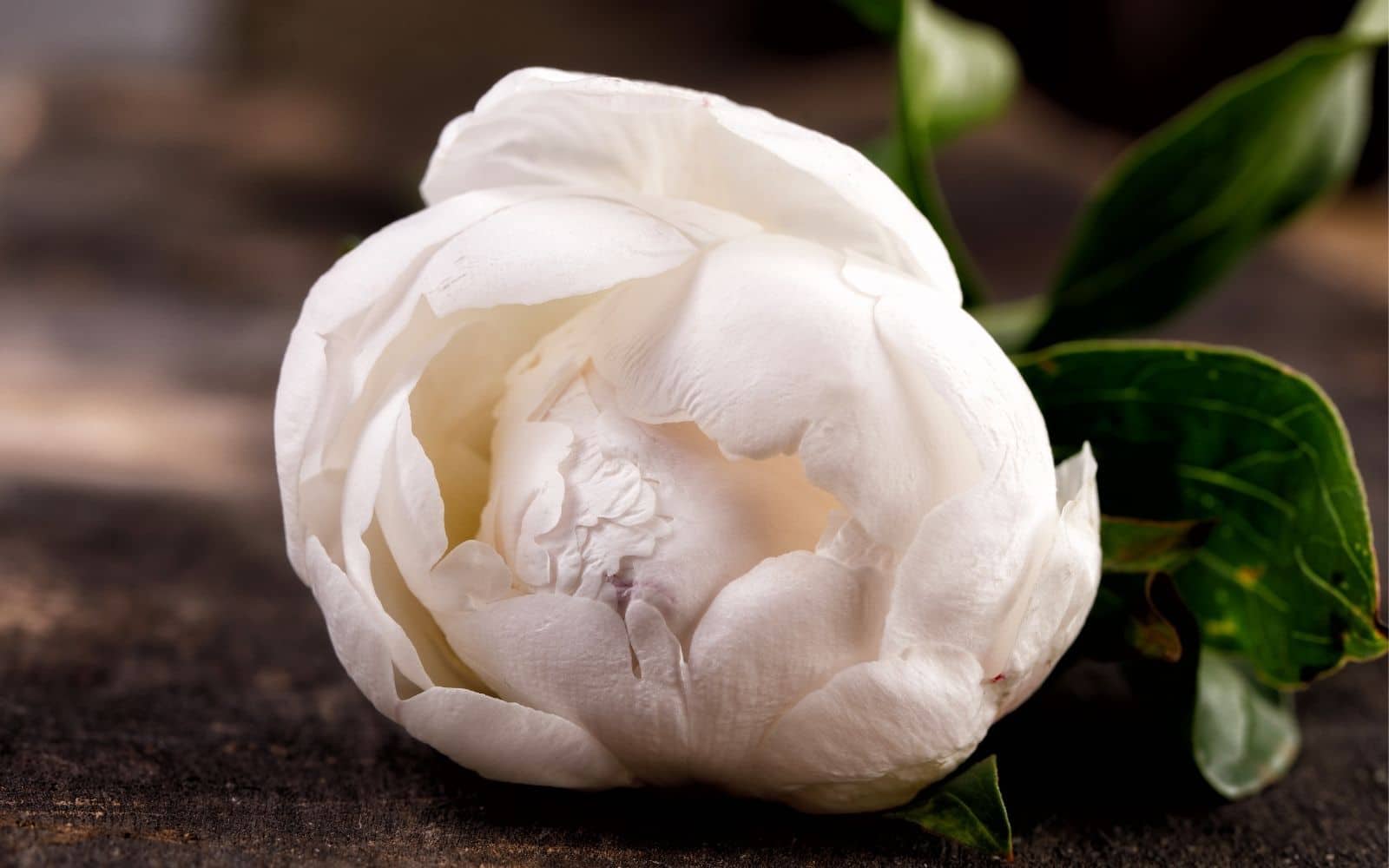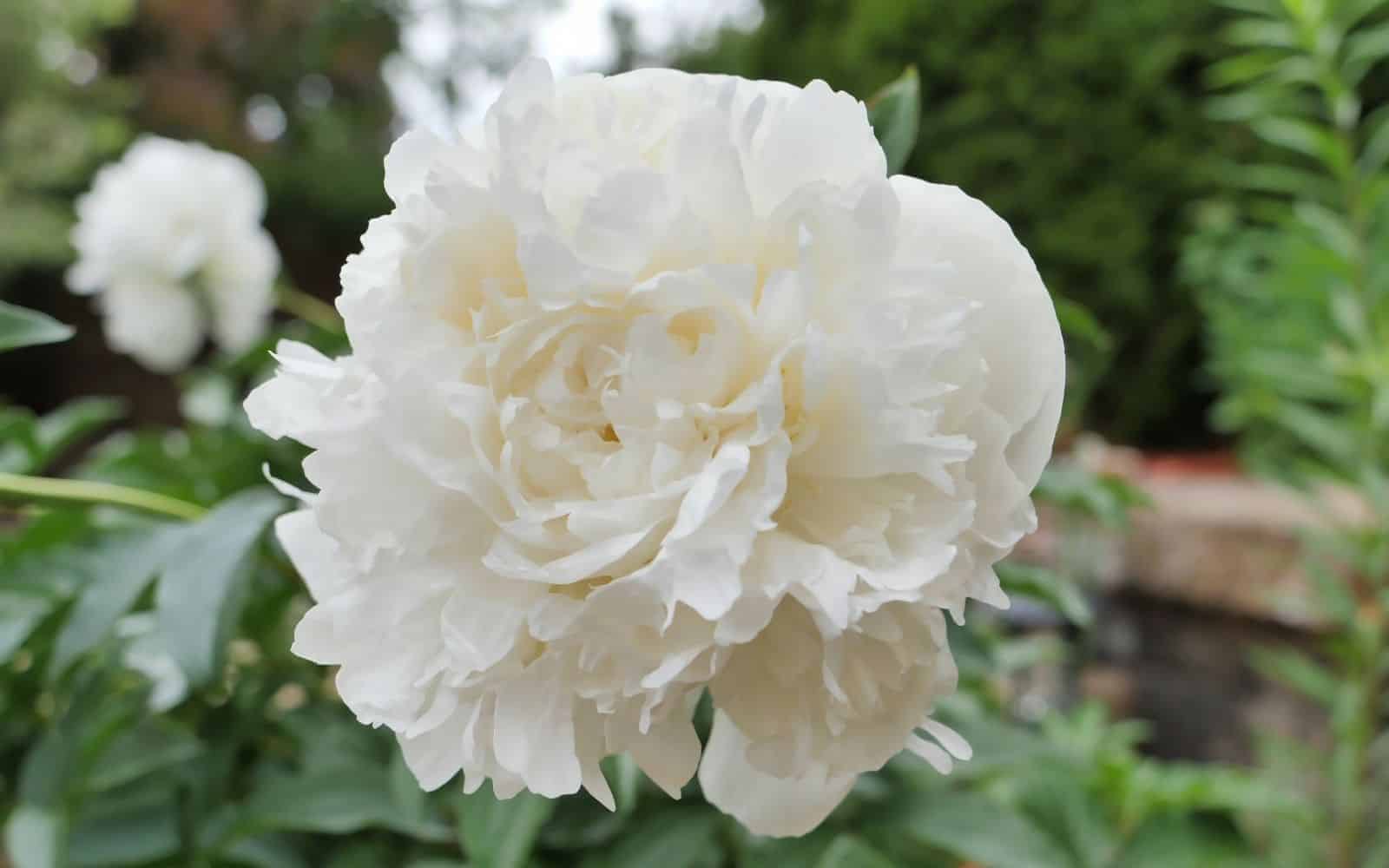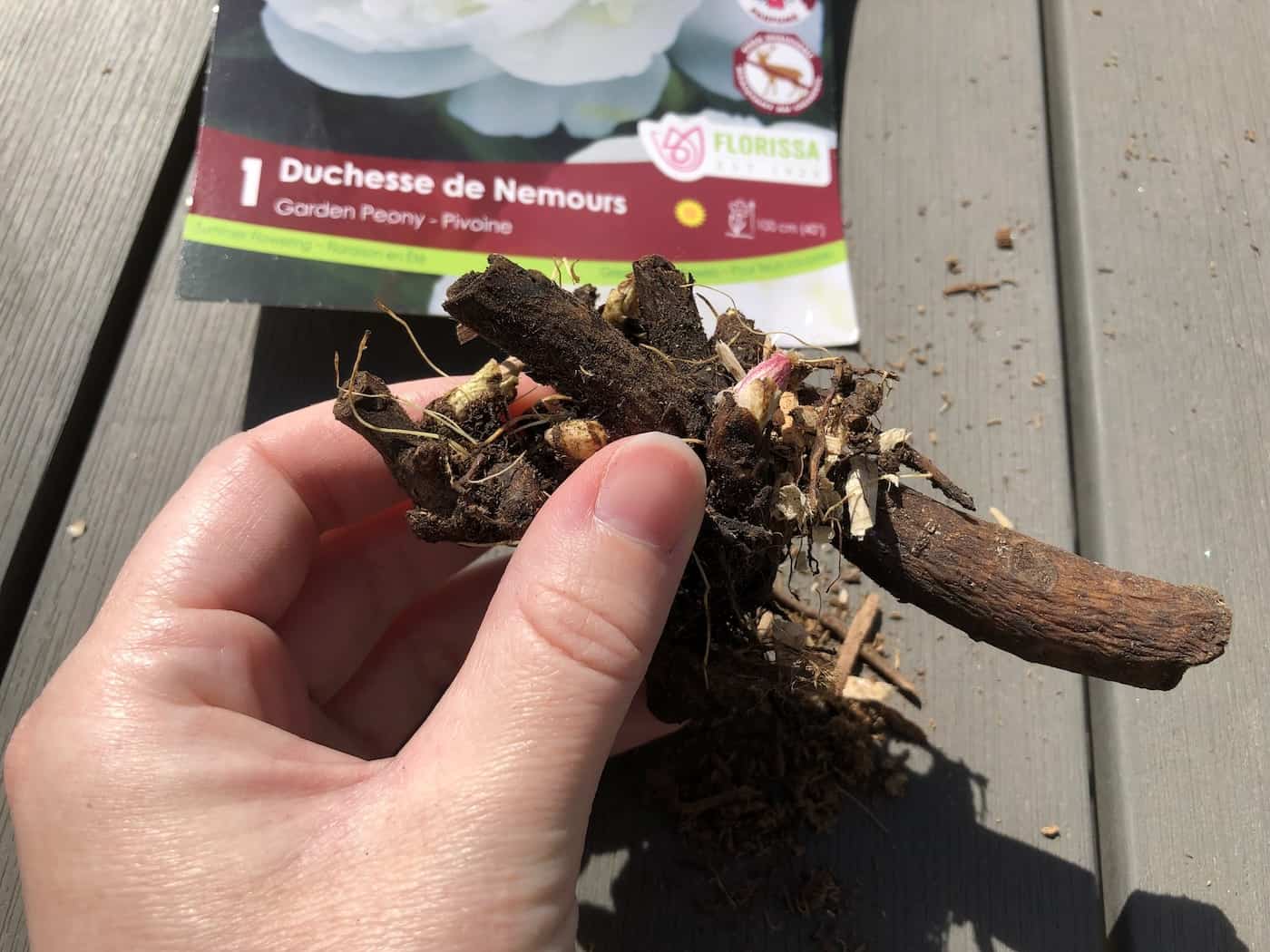Duchesse de Nemours peony is an heirloom double white peony variety. The fragrant flowers are 5″-6″ across and have a classic soft, fluffy appearance.
These herbaceous perennials grow about three feet tall, blooming best in full sun planting locations with moist, well-draining soil. The Duchesse de Nemours peony is a cultivar of Paeonia lactiflora bred in France in the mid-1800s by peony breeder Calot.

Duchesse de Nemours peony basics
The Duchesse de Nemours peony has been gracing gardens for well over a hundred and fifty years. This gorgeous cultivar was introduced by French peony breeder Calot in 1856 as a hybrid cultivar of Paeonia lactiflora. The Duchesse de Nemours peony would go on to receive the RHS Award of Garden Merit in 1993.
Duchesse de Nemours’s flowers are called “doubles” as they have multiple layers of petals. These big, fluffy, puffball-like flowers are among the largest types of peony blooms (and certainly the heaviest!). Other types of double peonies include Karl Rosenfeld peony, Sarah Bernhardt peony, and Festiva Maxima peony.
The Duchesse de Nemours peony grows about three feet tall and a similar width. It has glossy green foliage and boasts magnificent white peonies that grow to be between 5″-6″ wide each.

Buying Duchesse de Nemours peony plants
Duchesse de Nemours peony plants are most commonly available in the late spring and the fall. Dormant bare roots can be purchased at garden centers in late winter and early spring, while potted growing plants are more common in mid-spring when the garden centers are in full swing. Some specialty retailers ship their peonies in the fall.

Classification
Duchesse de Nemours peony plants (Paeonia lactiflora ‘Duchesse de Nemours’) are herbaceous peony plants with full double-type flowers that bloom during the late midseason of peony flowering season (typically blooming in late spring to early summer).
Peonies come in six main flower forms: single, anemone, Japanese, semi-double, bombe, and full double. Full double peonies like Duchesse de Nemours are known for their voluminous layers of petals. In this flower type, all stamens and carpels are transformed into petals. Double peonies look like a flower inside a flower (hence the term “double”).
There are three main types of peony plants: tree, herbaceous, and intersectional. Duchesse de Nemours peonies are among the herbaceous category of peony plants. They are perennial plants. Herbaceous peonies die back to the ground in the fall and sprout back up fresh foliage every spring.

Planting Duchesse de Nemours peony in the garden
These peony plants are easy to plant in the garden. Most often, they are sold as bare roots, which are available in garden centers in the early spring and for shipping from specialty nurseries in the fall. Some spring garden centers carry potted Duchesse de Nemours plants.
Choose a planting location in full sun, where the leaves of the plant can receive 6-8 hours of sunlight per day. Look for a place with well-draining, medium moisture soil (although these peonies are tolerant of clay soil, as long as it isn’t ponded with water). If planting in fall (the preferred time to plant), try to get the plants in the ground at least six weeks before the ground freezes.
Peony plants, especially bare-root peonies, should be planted carefully to ensure they are not placed too deep. The knobby crown at the top of the roots and the bud “eyes” should be about 1″ below the surface of the soil. Peony plants buried under 2″ of soil may not bloom properly in future years.

Growing Duchesse de Nemours peony plants
Like most peonies, the Duchesse de Nemours requires only minimal maintenance as long as they’ve been planted in the right spot.
While peonies don’t need a lot of attention, giving heavy-flowered varieties like Duchesse de Nemours some kind of support for their stems is a good idea. This can be wooden stakes, metal peony circles, or even tomato cages.
The Duchesse de Nemours only blooms in spring but is resilient throughout the year. When the fragrant blooms start to die down at the beginning of summer, it’s time to start cutting them back slightly by removing the spent flowers. They should be cut back a little into the deep green foliage so the stem doesn’t stick out.
Along with trimming back dying blossoms, you should also trim the peony plant’s attractive foliage to the ground before each winter to minimize overwintering pests. This can be done immediately before or after the first hard frost of autumn.
There’s no need to mulch over these plants heavily in the winter, except possibly in Zones 2-3. If you do decide to mulch them in warmer zones, light mulching will be fine. Peonies are very cold-hardy! Wait until the soil is frozen to apply the winter protective mulch.
Pests and diseases
Fortunately, peonies aren’t vulnerable to many pests. Not only do they resist deer and rabbits, but they also have a symbiotic relationship with ants that protects them from things like slugs or aphids. They can, however, contract a variety of diseases if you aren’t careful with them.
Peonies are vulnerable to powdery mildew, which is rarely lethal but can make life much more difficult for them. The best way to prevent this is to keep them in the sunlight and immediately treat any signs of mildew. Plenty of sunlight will help the plant grow healthily and suppress fungus growing on it.






